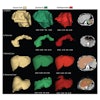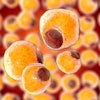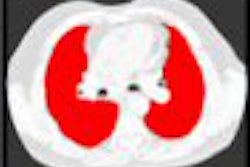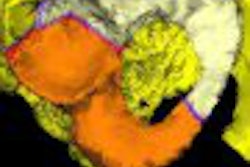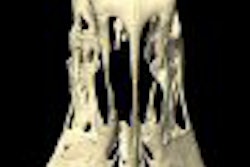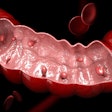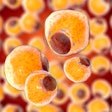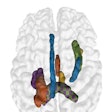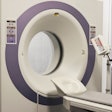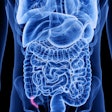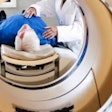The use of advanced visualization techniques has shown great clinical utility, but also comes with data management and informatics challenges, such as with integration and handling the large image datesets, according to Dr. Paul J. Chang of the University of Chicago Pritzker School of Medicine in Illinois.
"Advanced visualization is here to stay, but it has added complexities to what we need to do with respect to our infrastructure, not only with respect to archive, storage, and transmission, but also how we view our architecture with respect to integration," he said. "It's going to require a better, much deeper degree of integration that we have now."
The informatics challenges encompass archive architecture, server/client data transmission, visualization tools, enterprise-wide visualization, workflow integration models, and results communications, Chang said.
He spoke during a session at the Digital Healthcare Information Management Systems (DHIMS) 2008 meeting in San Antonio. The conference was sponsored by the University of Rochester School of Medicine and Dentistry in Rochester, NY.
Several trends have occurred recently in the realm of archive architecture, including a move toward on-demand spinning archive designs and less emphasis on hierarchical storage models, Chang said. In other good news, current and even near-future storage requirements also are tracking reasonably well with improving technical and economic gains related to mass storage technology.
"We don't have to sweat the problem of mass storage," he said.
These trends have significantly influenced archive persistence models for large image datasets, Chang said.
Archive, transmission models
Since workstations are able to handle these images, and mass storage is becoming a low-cost commodity purchase, the main problem with large datasets is data transmission, according to Chang.
Several archive models are available, allowing users to decide how they will transmit large datasets. In the selective model, thin slices of image data are sent from the modality to a standalone 3D/advanced visualization workstation, while thick slices are sent to the PACS archive and the traditional PACS workstation. Users can select key images from the standalone 3D workstation for permanent archiving.
This fairly common model has the advantage of permanently storing only thick slices. This is the least demanding on PACS archive storage requirements, and is also easy to implement.
However, the selective model has the disadvantage of not being able to use interactive advanced visualization techniques on prior or even relatively recent studies, Chang said. It's also not able to take full advantage of future visualization and analysis tools on prior studies, and the generation and transmission of separate thin slices may require intensive labor and disrupt workflow.
"This is just another thing the tech has to do, which is kind of a pain," he said.
A slight modification of this approach involves creating a temporary cache of the thin slices, instead of sending them directly to the standalone advanced visualization workstation. This cache then feeds the 3D workstation.
"If (the cache) is large enough, we can keep these thin slices around for more than a couple of days," Chang said. "So if I wanted to do 3D, I could go back and get those thin slices."
The cache model, which has become popular in Europe, offers the same benefit of permanently storing only the thick slices, and also allows for interactive advanced visualization on all current and relatively recent prior studies, depending on the size of the cache, according to Chang.
In a complete dataset archival model, both thick and thin slices are permanently stored on the PACS archive, allowing for advanced visualization on all current and prior studies, he said.
This approach, however, leads to a big increase in PACS archive permanent storage requirements; storing both the thick and thin image slices within the PACS archive is redundant and a little wasteful, according to Chang. Adding a 3D visualization workstation plug-in to this model can make the availability of advanced visualization tools convenient and less disruptive to normal workflow, he said.
By adding an integrated workstation with traditional PACS workstation and 3D/advanced visualization tools to the complete dataset archival model, users can also eliminate the inefficiency of storing redundant thick slices.
"You can actually automate the process. It's less burdensome for the technologists," Chang said.
Another variation that incorporates server/thin-client communication has the advantage of reducing the hardware and network requirements for PACS workstations, and can greatly improve client performance, he said. It also allows for Web viewers to access full-featured advanced visualization tools.
"I think you're going to find more and more people are going to embrace this model," Chang said. "When I look at almost all of the advanced visualization vendors, they're moving this way. The days of the standalone 3D workstation are numbered."
AV tools
Visualization tools include volumetric presentation and navigation techniques, such as multiplanar reformatting (MPR), maximum intensity projection (MIP), shaded surface displays (SSD), and volume rendering (VR). Other tools include image fusion and functional/temporal visualization, Chang said, adding that these tools must be seamlessly integrated into routine PACS workstation and workflow.
"This should be as ubiquitous as window/level, zoom/pan," he said.
In addition, advanced presentation and navigational tools must be simultaneously available for current and prior studies -- a current technological weakness that needs to be addressed, Chang said. The tools should also be made available to enterprise users via Web clients, and must be more intuitive with better integration and software intelligence, he said.
Workflow integration models must be seamlessly integrated into the overall departmental workflow, according to Chang.
A few promising initiatives are under way to help with the problem of handling large datasets, including the Transforming the Radiological Interpretation Process (TRIP) initiative from the Society for Imaging Informatics in Medicine (SIIM), he said.
The Integrating the Healthcare Enterprise (IHE) initiative is also working on a postprocessing workflow integration profile, which describes mechanisms for the automation of distributed postprocessing of imaging studies in which advanced visualization or computer-aided detection is required. It can also create advanced visualization worklists, according to Chang.
By Erik L. Ridley
AuntMinnie.com staff writer
April 7, 2008
Related Reading
Buying a RIS/PACS for a distributed radiology practice requires careful planning, March 31, 2008
Planning eases PACS upgrade woes, vendor changes, March 27, 2008
CAD provides mixed benefits for DR lung exams, March 8, 2008
Wise planning helps bring 3D lab to the community practice, February 19, 2008
Hybrid lung segmentation software boosts performance, February 13, 2008
Copyright © 2008 AuntMinnie.com

